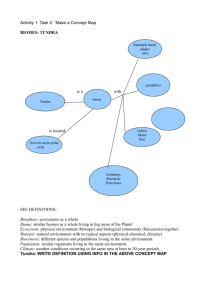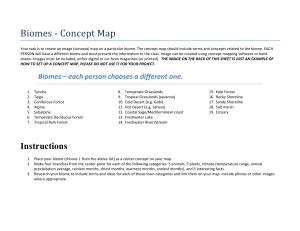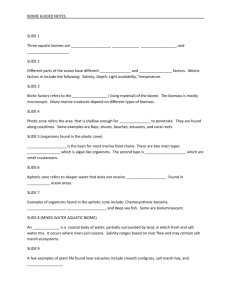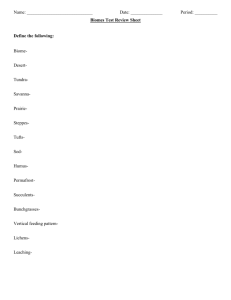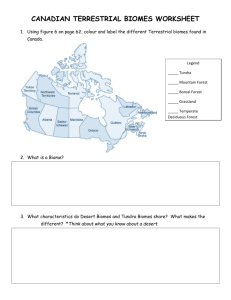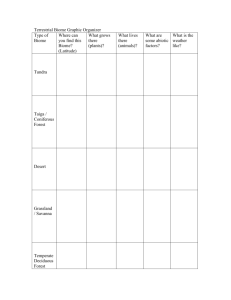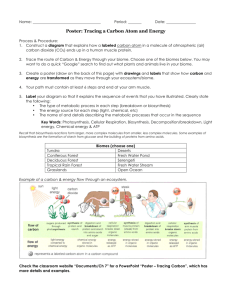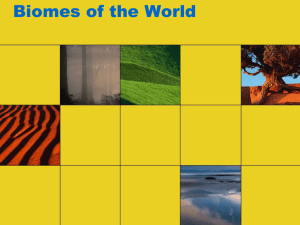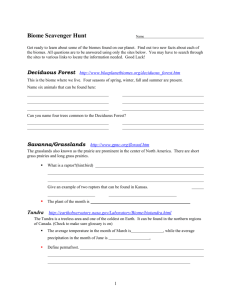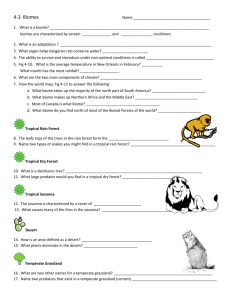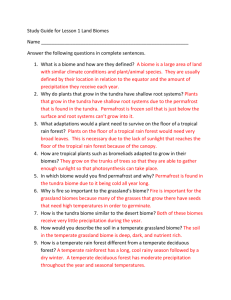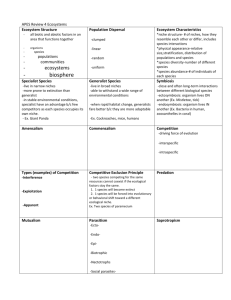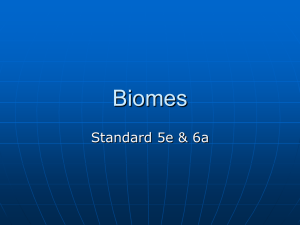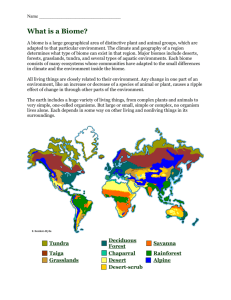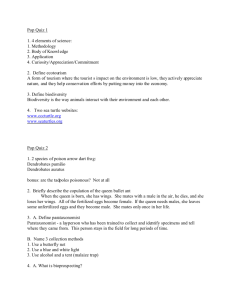Ch. 4.2 Notes - Lamar County School District
advertisement
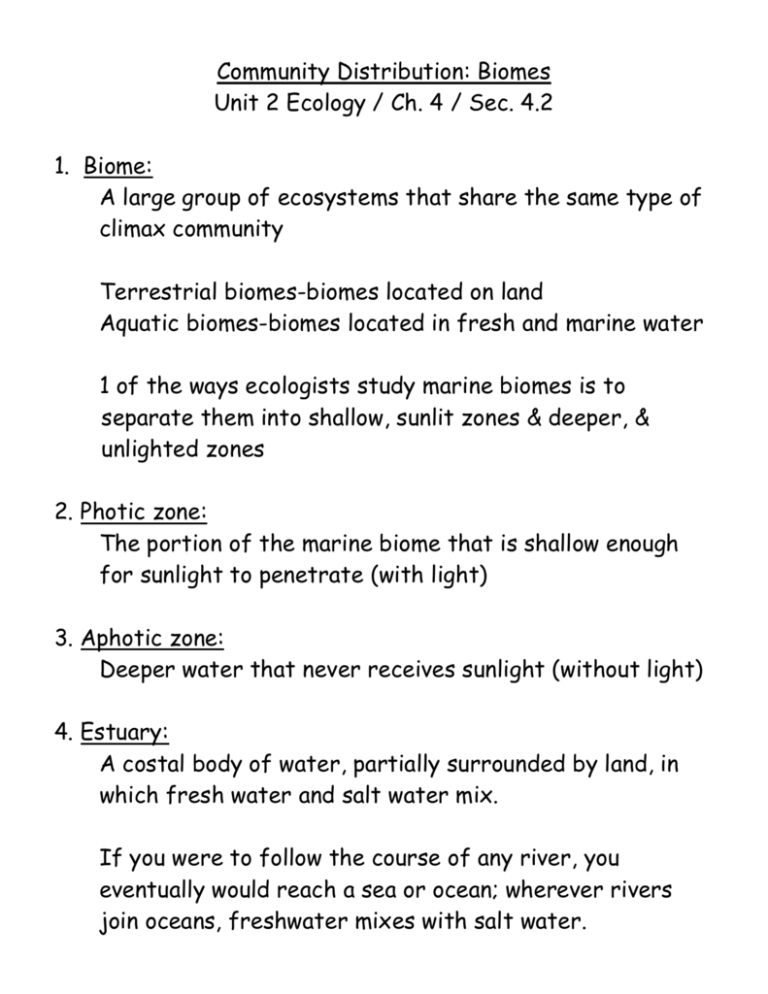
Community Distribution: Biomes Unit 2 Ecology / Ch. 4 / Sec. 4.2 1. Biome: A large group of ecosystems that share the same type of climax community Terrestrial biomes-biomes located on land Aquatic biomes-biomes located in fresh and marine water 1 of the ways ecologists study marine biomes is to separate them into shallow, sunlit zones & deeper, & unlighted zones 2. Photic zone: The portion of the marine biome that is shallow enough for sunlight to penetrate (with light) 3. Aphotic zone: Deeper water that never receives sunlight (without light) 4. Estuary: A costal body of water, partially surrounded by land, in which fresh water and salt water mix. If you were to follow the course of any river, you eventually would reach a sea or ocean; wherever rivers join oceans, freshwater mixes with salt water. 5. Intertidal zone: The portion of the shoreline that lies b/t high & low tide lines Twice a day, the gravitational pull of the sun & moon causes the rise & fall of ocean tides; tides vary in height, depending on the season & the slope of the land. 6. Plankton: Are microscopic organisms that float in the waters of the photic zone 7. Tundra: A treeless land with long summer days & short periods of winter sunlight Because temperatures in the tundra never rise above freezing for long, only the topmost layer of soil thaws during the summer Ex: ratlike lemmings, weasels, artic foxes, snowshoe hares, snowy owls, hawks, musk-oxen, & reindeer 8. Permafrost: (underneath the topsoil) Is a layer of permanently frozen ground 9. Taiga: Is a land mixed pine, fir, hemlock, & spruce trees; known as the northern coniferous forest Ex: snowshoe hare, caribou, moose, & lynx 10. Desert: Is an arid region with sparse to almost nonexistent plant life Deserts usually get less than 25 cm of precipitation/year. Ex: kangaroo rat, foxes, coyotes, hawks, owls, snakes, lizards, scorpions, & roadrunners 11. Grassland: Are large communities covered with grasses & similar small plants This biome occupies more area than any other terrestrial biome; they are ideal for growing cereal grains like oats, rye, & wheat, which are different species of grasses; known as the breadbaskets of the world. Ex: large herds of grazing animals 12. Temperate forest: Are dominated by broad-leaved hardwood trees that loose their foliage annually Ex: birds, squirrels, mice, rabbits, deer, & black bears 13. Tropical rain forest: Is a region of uniformly warm, wet weather dominated by lush plant growth Receives at least 200cm of rain annually (some see around 400 cm); temp remains warm year round (25°C); the leafy tops of tall trees shade the forest floor so completely that few plants grow there. Ex: monkeys, gorillas, cougars, beetles, butterflies, & black-headed cacique



